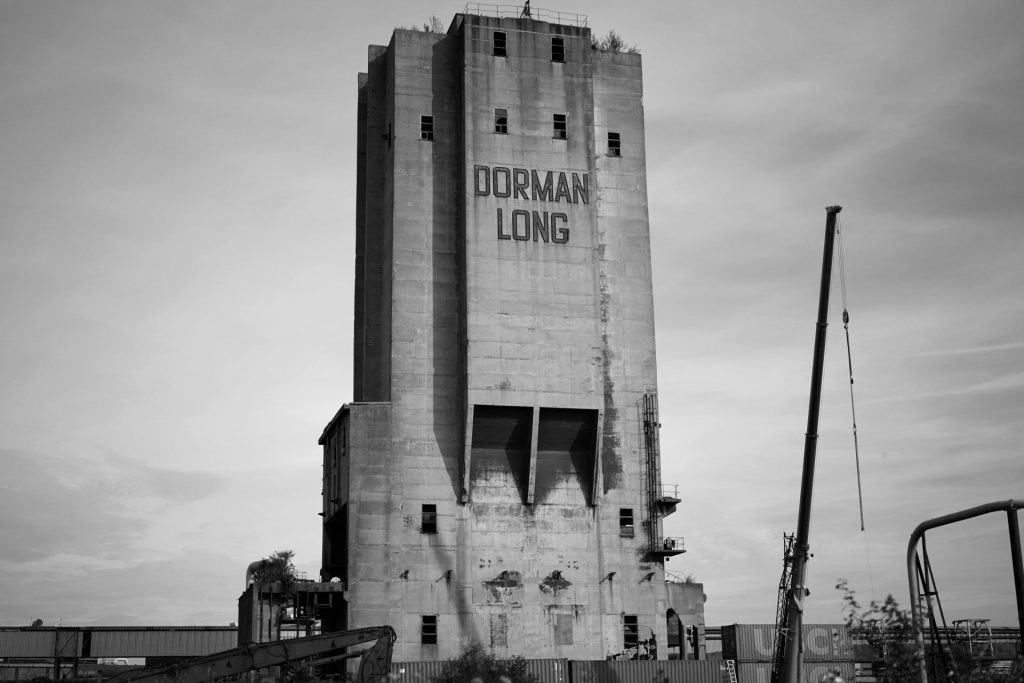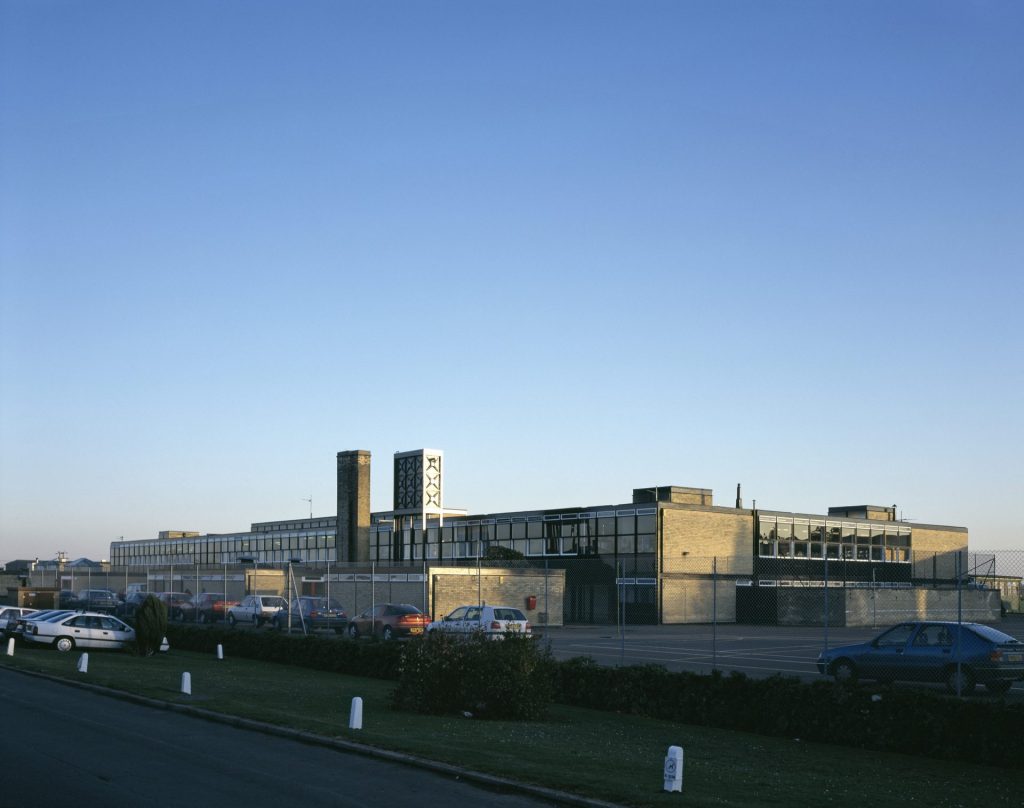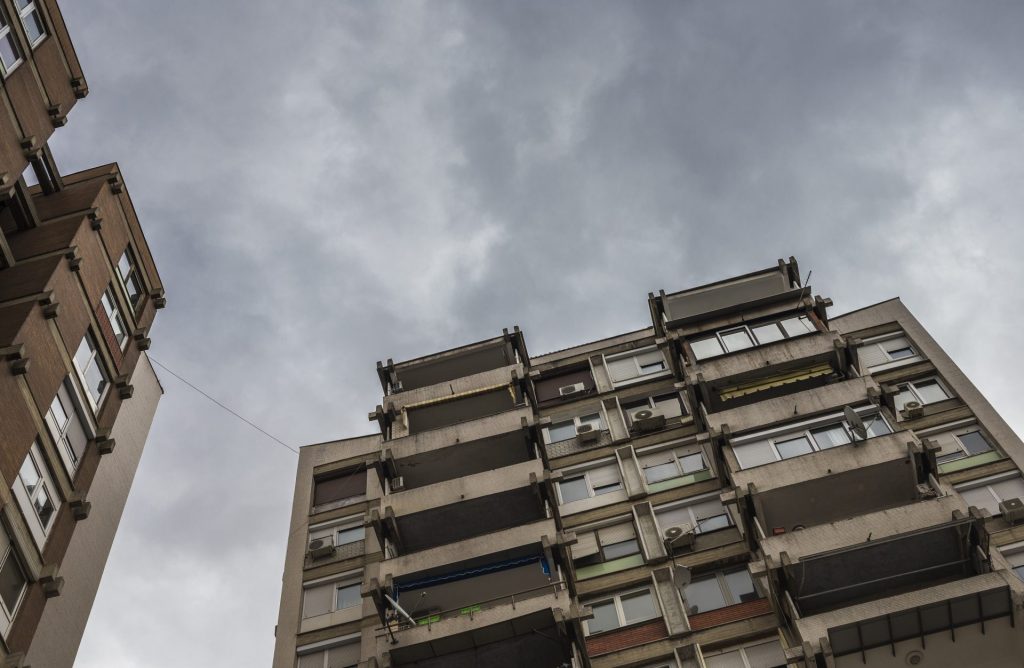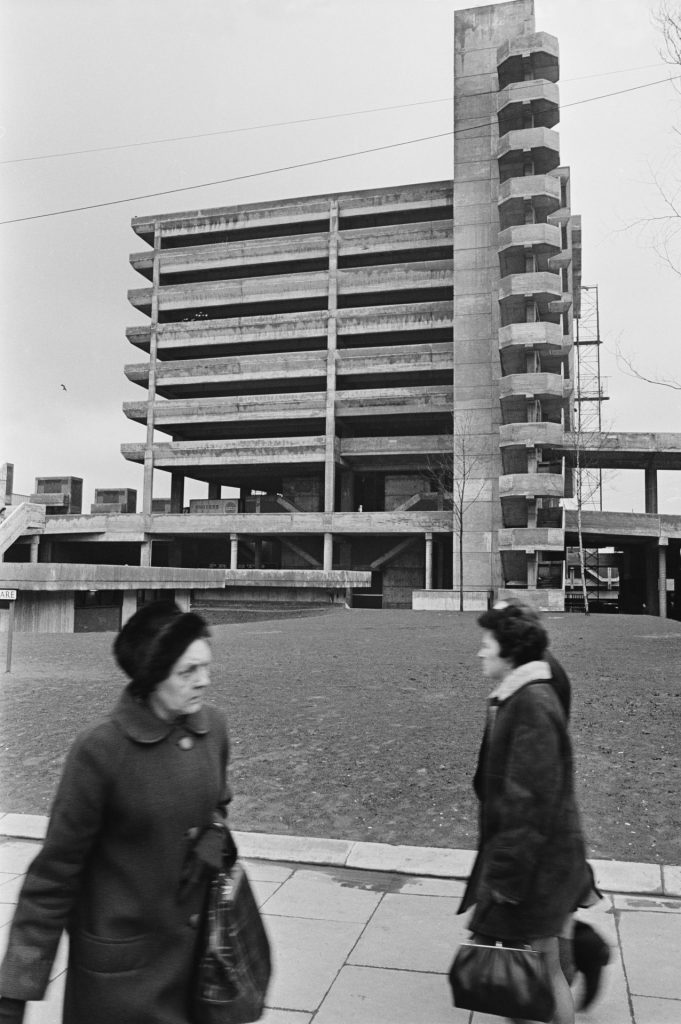The last film in my third BBC series was entitled “Remember The Future: Big Tech of the 60s”. It was also the only film in any of those series (or any of the films I made subsequently) whose script and hypotheses and very subject were met with bafflement, a generalised pull-the-otherone and an unarticulated scorn. Glass and concrete universities, telecommunications installations, cooling towers, listening devices, direction-finding antenna, monumental social housing projects, mankind’s dominion over the Earth, optimism and a belief in progress… A gamut of hopelessly dated, utterly discredited ideas, kit and fashions – the detritus of the cold war.
I must be kidding, right? Maybe. I didn’t know. It never does to ascribe motives and humours when you have no idea what they are: there is a case for willed incuriosity. The date, however, is important. This was 1995. Postmodernism was then still the architectural orthodoxy even if it had long lost its audacity and cheek and was exhausted.
Most architects are sheep, derivative copyists. Like its Victorian predecessors, the British flock in the Age of Thatcher and the Age of Major – an unusual construction, that – followed the big name goats: Terry Farrell, Piers Gough & CZWG, Jeremy Dixon and Robert Venturi, whose dire extension to the National Gallery in London is surely due for demolition. Their disciples ransacked countless vintage dressing-up boxes: classicism, Queen Anne, arts and crafts, art deco, and countless other schools were treated to near-illiterate makeovers. They were supported by the taxonomically obsessed critic – actually a PR – Charles Jencks.
The idea was to achieve idioms that were accessible, ie decipherable by the easily pleased, by the indolent, by the slow-learning community. The result was infantilism on a massive scale, grown men playing in a sandpit with primary-coloured, elementarily shaped toys, “quoting” (lifting and distorting) random elements from precedent’s endless catalogue and remembering that at all costs everything must be fun and smiley and frivolous and jokey and a homage to Pantone. Polychrome was de rigueur. Ornament was no longer crime. Anything but. The high seriousness of modernism, with its whiff of socialism, dilute utopianism and herbivorous egalitarianism was long buried. Its vague yet palpable aspiration to renew the world was ridiculed. A tomorrow that broke with yesterday was a chimera.
And then it was 2013. The BBC invited me to provide 120 minutes of “content” about brutalism. I replied that I had already – in the face of nagging opposition – made a film for the very same BBC on the very same subject, 18 years ago. Ah! That was different… What was of course different was that there now existed a crowded field. Brutalism was suddenly dernier cri. It was in the air. Where once I had been a lone voice, there was now a clamorous melée of exhumers staking a claim to an apparently previously overlooked and unheard-of moment in architectural history.
These grave robbers were of generations born at least a decade after the decline of brutalism – precipitated by the oil crisis of 1973, essentially the employment of an embargo as an expression of Arab antisemitism. There were enough of them to effect a change of aesthetic fashion, to react strenuously against postmodernism’s infantilism, against the undemanding last-gasp sub-architectural chumminess of Tony Blair’s long incumbency, which was a resort to yesterday’s outfits when all else had been tried on and worn out.
Postmodernism had caught up with itself, was devouring itself, there was nothing left in the wardrobe. The initial reaction to its threadbare frailty did not come from architects, the makers. It was commentators – academics, writers, journalists, taste-victims and, most importantly, photographers – who celebrated the forgotten, the overlooked, the substantial. They militated, half a century on, for the revival of a tough uncompromising architecture, which was far more than candyfloss, which had ambitions beyond making sure that the kiddies in kindergarten were not disturbed, beyond the risk of upsetting the philistines at Westminster.
It is to be noted that the thick Nadine Dorries’s first act when appointed culture secretary was to strip the brutalist Dorman Long tower at Middlesbrough of its listing so that it could be demolished. (A fatally ill child will usually be exploited to press the button). Brutalism is the laziest of targets, “brutalist monstrosity” the easiest means of getting an audience of three-car-garage executives clapping their approval: their one-car-garage fathers and grandfathers responded kindredly to “Victorian monstrosity”. There must, it seems, always exist a style or building type or material that is collectively damned, which must be erased in order to satisfy the canons of “good taste”. Good taste is twee, whimsical, pretty, picturesque.

Brutalism is none of those. Brutalism belongs to the sublime. Britain – its pocket landscapes, like its climate, mostly lacking in drama – has a problem with the sublime, which is alien. Brutalism has become so widely mediated that everyone knows that the coinage derives from the French for raw concrete. Equally, everyone knows that it derives from a Swedish architect’s in-joke about the appearance of a fellow architect’s house in Uppsala built in 1949. The material was industrial brick, not concrete. Brick was also the material Le Corbusier used at les Maisons Jaoul in Neuilly, the model for Stirling and Gowan’s flats in Richmond and their equally bricky Engineering Building at Leicester University. Brutalism is not, then, defined by material. Nor is it by tics of style. Everyone knows too – because they have been told so – that the sainted Smithsons’ school at Hunstanton (1954) is lauded as the key early work of British brutalism even though is has nothing to do with what would subsequently come to be defined as brutalism, a broad church but not that broad.

Having been told that this gaunt quasi-industrial, rationalist exercise beside The Wash is the fons et origo, everyone fails to use their eyes, fails to recognise that it is a near-plagiarism of the arch minimalist Mies van der Rohe. Nikolaus Pevsner is more polite: “evidently inspired by”. Mies is celebrated, if that’s the word, for his daft dictum “less is more”. How Hunstanton School can be both Miesian and brutalist is a matter only brutalism’s bearded laureate Peter Reyner Banham, another taxonomical obsessive, can reconcile.

One means of discerning what is brutalist and what is not is to heed Pevsner, who loathed brutalism, considered it an aberration and found no empathy with artists who eschewed the orthogonal and the euclidian. For him it was vaguely expressionistic. It was certainly tainted by outsider art, by primitivism. The modern movement, whose greatest propagandist he was, had surely got rid of such self-indulgence. He was offended by, for instance (and there are many), Dr Barnado’s in Kidderminster: “dagger shaped pre-cast concrete members produce a restlessness made even less acceptable by the crude contrast of black and white”. Ouch. The architect went to work in Pakistan. And pre-cast concrete? Weren’t brutalist buildings supposed to be essays in poured concrete?
Previous forms of architecture had represented and saluted the natural world: carved plants, sculpted flowers, cast logs (a speciality of French parks). Brutalism went further. It didn’t create versions of rock formations. It rivalled and matched those formations by its very scale: buttes, dolorite columns, prisms, stacks, arches. Brutalism imitated termitaries and honeycombs, magnifying them a thousand-fold. Ricardo Bofill’s Walden 7 in the outskirts of Barcelona and the Rodney Gordon/ Owen Luder car park at Gateshead look from a distance like abandoned fortresses. Brutalism created landscapes with the arrogance of Orsini at Bomarzo, or God in Utah.
It created the oxymoron of a serious folly. It considered that architecture was more than function. It was what we live in and through and around. It should appeal to the senses. The worst architecture is that which is polite, which seeks not to offend, which is careful. Brutalism was not an idiom. It was a mood: just as surrealism existed centuries before André Breton wrote its footling rulebook, so has brutalism always been with us: dark, heavy, lowering, sullen, intense, harrowing, aggressive. And exhilaratingly pregnant with wonder. But not nice. Niceness doesn’t come into it. Goya, Grunewald, Rabelais, Beethoven (“like the upsetting of a bag of nails” according to Ruskin), Vanbrugh (Blenheim was “execrable… a quarry of stone” according to Horace Walpole), Bosch, Altdorfer, Kiefer were/are all touched by the spirit of brutalism. So too were the many Anons who built cyclopean walls and the dolmen of Sa Coveccada in Sardinia in the third millennium BC. It is made for the artist, by the artist. Its job is not to be courteous to an imaginary audience but to excite, to warm that congregation’s blood, freeze its spine. No compromise. Luder believed that if a building – at least one of his buildings – could speak, it would say “sod you”.
For all its massiveness, brutalism has proved no match for the wrecker’s ball. Skopje, 80% destroyed in an earthquake in 1963, was rebuilt by a group of architects including Kenzō Tange. It possessed the most concentrated group of brutalist buildings in Europe. Over the last decade, however, much of it has been destroyed or made over as the city is gradually turned into a morass of kitsch classicism.

Gateshead, 1969. Photo: Palmer/Daily Express/
Hulton Archive/Getty
Friedrich Tamms of the Todt Organisation was the architect of numerous flak towers in Berlin, Vienna and Hamburg, of submarine pens in Bordeaux and Saint-Nazaire, of gun emplacements the length of the West Wall and on the Channel Islands. Belligerence was sculptural. It was a threat to the occupied people whom it “defended” that they were subservient to the greater cause. It accords with Paul Virilio’s proposition that war is a great inventor.
The expressionism which brutalism drew on was predominantly northern European. It greatest exponent was Michel de Klerk. His Eigen Haard estate in suburban Amsterdam is a tour de force in sculpted brick. His originality and influence were such that had he not died at the age of 39 in 1923 the complexion of western European architecture would be different.
Vatican II, 1962 -65, was a godsend to architects. Its buildings were to be advertisements for the church’s newfound modernity and cuddly ecumenical character. Architects enjoyed carte blanche. God can, apparently, live anywhere – and in the 1960s, he shared the widespread taste for open-plan spaces and theatre-in-the-round. The architects who most took advantage of this were Walter Förderer in Switzerland and Germany, Gottfried Böhm in and around Cologne, and Fritz Wotruba in Vienna. Their work defines brutalism. It is accretive, ostentatious, hyperbolic in its asymmetries and protracted voids, composed of parts that do not connect or are in a fragmentary state, dramatically vertiginous, geometrically farouche, extravagantly cantilevered, discomfiting – everything, then, that postmodernism wasn’t.
Among brutalism’s curious fates was its appropriation by the great labour administrations of the 60s and 70s. It became the architecture of the establishment – an association that caused a generation, including young architects, to reject it, unwisely. It had to wait its turn. The work of 6a Architects, Ortner & Ortner, Jürgen Mayer, Moon Hoon and OMA (sometimes) suggests that turn has arrived. They make you feel, no matter how delusionally, that you’re living, once again, in a world that has future prospects.



